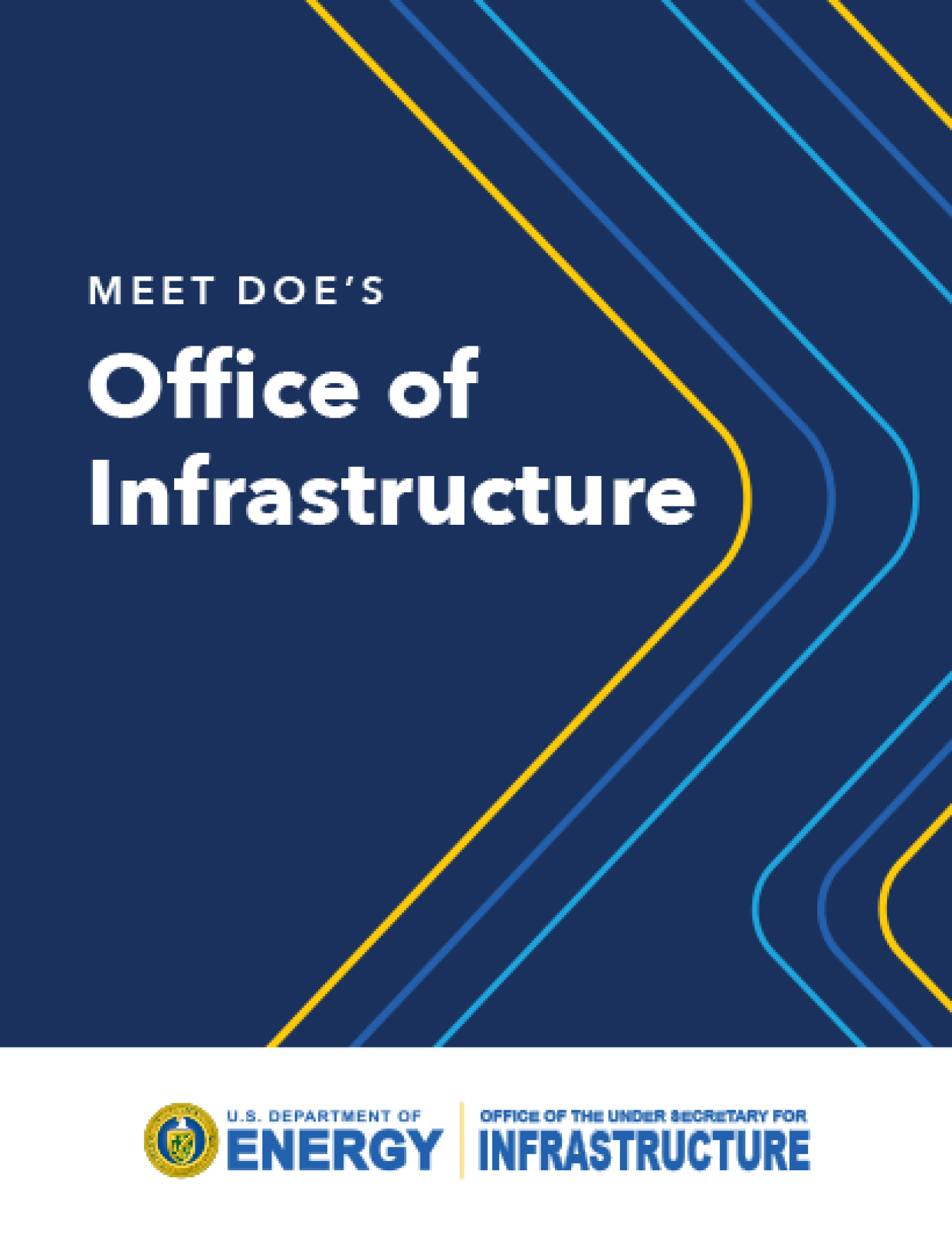
Meet DOE's Office of Infrastructure (PDF Download)
Supercharging a New Clean Energy Economy
The U.S. Department of Energy (DOE) established the Office of the Under Secretary for Infrastructure in 2022 to deploy energy infrastructure investments from the Energy Act of 2020, the Infrastructure Investment and Jobs Act, and the Inflation Reduction Act. We are the demonstration and deployment arm of DOE, stewarding billions in historic investments to renew our nation's infrastructure, rebuild domestic manufacturing, create millions of good-paying jobs, address climate change, and increase American competitiveness.
Building on decades of research and innovation, clean energy technologies are now less expensive, better performing, and playing a rapidly growing role in the U.S. energy economy. DOE, thanks to these historic laws passed by Democrats and Republicans in Congress, has entered a new era the American energy economy and energy infrastructure by catalyzing private sector investment and assisting communities and local, state, and Tribal governments.
Trillions are expected to be invested globally, and the greatest benefits—jobs, bill savings, economic growth, and improvements to health and the environment—will flow to the communities, states, regions, and countries that move quickly to remove barriers to investment.
The anticipated result: an affordable, reliable, resilient, secure, and equitable clean energy transition.
DOE's New Division to Demonstrate and Deploy
Our division is made up of mission-oriented offices that each have defined roles in supporting the energy transition, accelerating our path to the new clean energy economy, and collaborating with the private sector and communities across the country to integrate new technology and achieve lasting impacts.
Learn More about Each of Our Offices
OCED is a multi-technology office managing more than $25 billion in clean energy demonstration projects at a commercial scale, in partnership with the private sector, to accelerate market adoption of new technologies as part of an equitable transition to a decarbonized energy economy. Learn more about OCED.
CESER plays a critical role in enhancing our national security and the resilience of the U.S. energy sector against all hazards, including physical attacks and cyberattacks and natural and climate change-related risks like hurricanes and wildfires. CESER also includes the Office of Petroleum Reserves, which operates the Strategic Petroleum Reserve and other critical fuel reserves. Learn more about CESER.
GDO oversees a $26 billion portfolio supporting states, utilities, and grid operators in deployment, regulatory, and operational activities to upgrade and expand the nation's transmission grid, increase resilience against increasing extreme weather and fires, accelerate the transition to smart grids deploying new energy resources, and maintain existing clean energy generation by retaining the civilian nuclear fleet and upgrading hydroelectric facilities. Learn more about GDO.
FEMP helps the biggest energy user in the U.S.—the Federal Government—lead by example and achieve deep energy efficiency, emission reductions, and improved energy resilience in its buildings, vehicle fleets, and procurement. FEMP builds agency capacity by providing workforce training, tools, technical assistance, and project financing support. Learn more about FEMP.
IE works with Tribes and organizations—and across government agencies—to catalyze Tribal energy development, reduce or stabilize Tribal energy costs, strengthen Tribal energy infrastructure, and deliver affordable energy to more Tribal households to improve the social, environmental, and economic well-being of Tribes. Learn more about IE.
MESC is revitalizing the U.S. manufacturing base with over $20 billion of direct investment in manufacturing capacity, industrial decarbonization, and workforce development. MESC also houses the DOE's supply chain analytics backbone, informing investment decisions and policy across and beyond DOE. Learn more about MESC.
LPO accelerates high-impact energy investments with over $350 billion in loan authority, acting as a “Bridge to Bankability” for emerging clean energy technologies. It enables the expansion of domestic manufacturing and supply chains, reinvests in energy infrastructure, and makes clean energy transformation affordable and achievable for consumers and communities and beneficial for American workers. Learn more about LPO.
SCEP assists state, local, and Tribal governments and community-based stakeholders to accelerate local, state, and Tribal energy improvements, energy planning, workforce training and development, low-income weatherization, home and electrification rebates, and related efforts. Learn more about SCEP.
PMAs operate tens of thousands of miles of electricity transmission lines and provide power from Federal hydropower facilities to tens of millions of households and businesses served by the nation's electric cooperatives, municipal utilities, and other public power entities. Learn more about PMAs.
To receive the latest news and updates about clean energy infrastructure funding opportunities, events, and resources, sign up for our newsletter and email updates.

